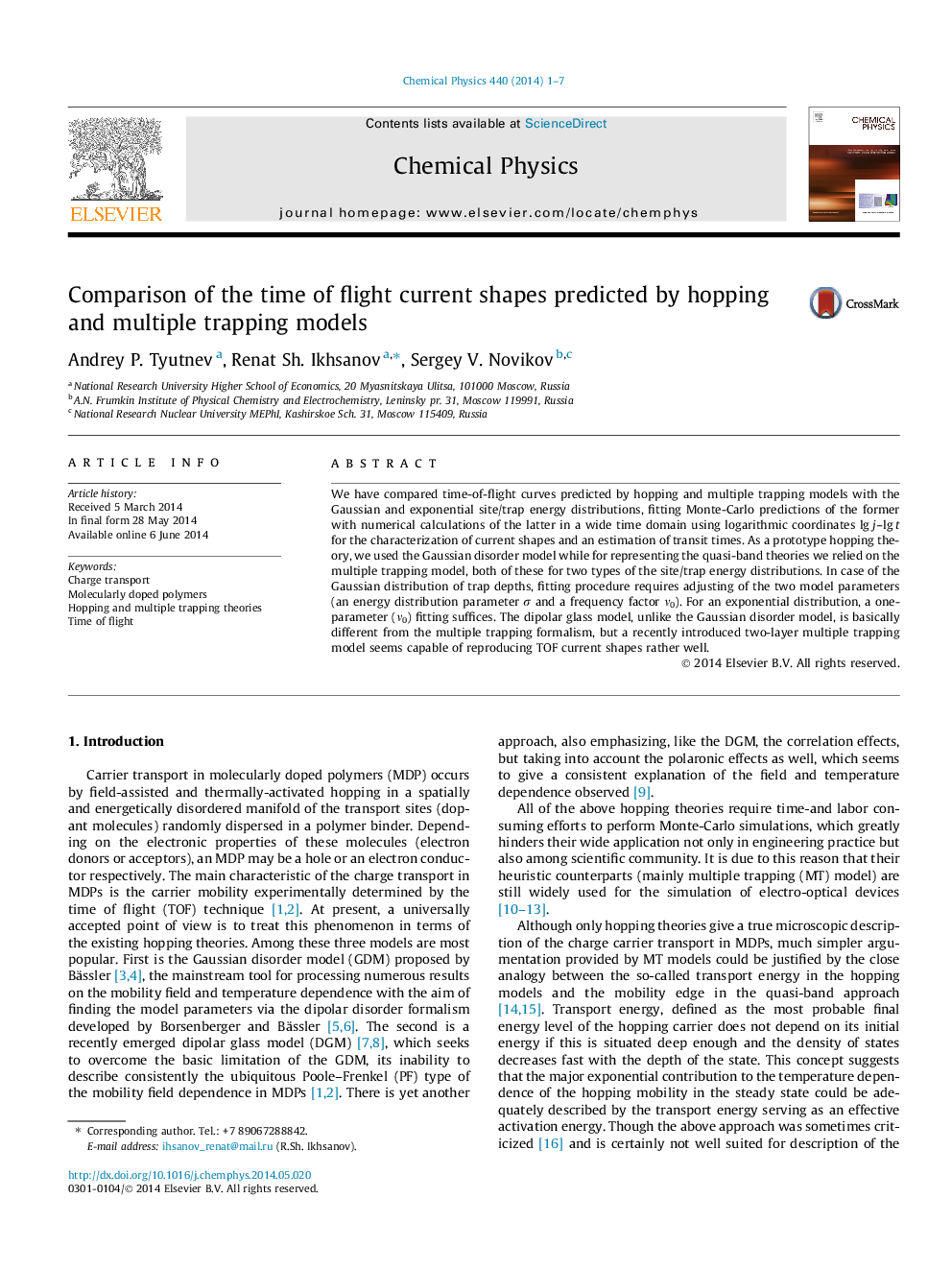| Article ID | Journal | Published Year | Pages | File Type |
|---|---|---|---|---|
| 5373411 | Chemical Physics | 2014 | 7 Pages |
â¢Close fitting of the hopping transients with their respective quasi-band counterparts is possible.â¢Gaussian disorder model needs a two-parameter fitting.â¢In case of an exponential site distribution it suffices a one-parameter fitting.â¢Dipolar glass model needs a two-layer quasi-band model.
We have compared time-of-flight curves predicted by hopping and multiple trapping models with the Gaussian and exponential site/trap energy distributions, fitting Monte-Carlo predictions of the former with numerical calculations of the latter in a wide time domain using logarithmic coordinates lg j-lg t for the characterization of current shapes and an estimation of transit times. As a prototype hopping theory, we used the Gaussian disorder model while for representing the quasi-band theories we relied on the multiple trapping model, both of these for two types of the site/trap energy distributions. In case of the Gaussian distribution of trap depths, fitting procedure requires adjusting of the two model parameters (an energy distribution parameter Ï and a frequency factor ν0). For an exponential distribution, a one-parameter (ν0) fitting suffices. The dipolar glass model, unlike the Gaussian disorder model, is basically different from the multiple trapping formalism, but a recently introduced two-layer multiple trapping model seems capable of reproducing TOF current shapes rather well.
Graphical abstractDownload full-size image
